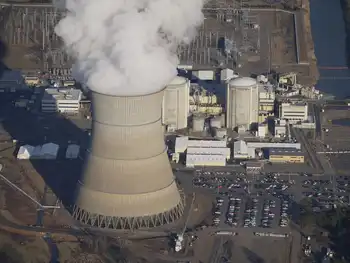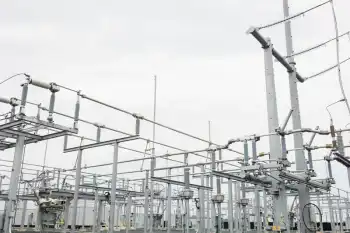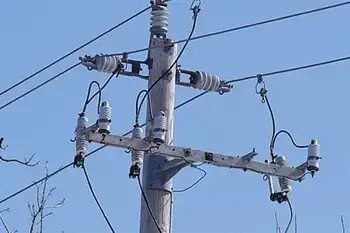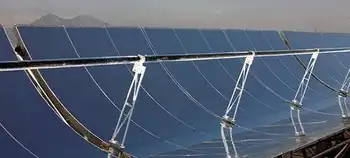AECL, SNC-Lavalin ask for billions for new reactors
By Globe and Mail
Substation Relay Protection Training
Our customized live online or in‑person group training can be delivered to your staff at your location.

- Live Online
- 12 hours Instructor-led
- Group Training Available
The companies, who say government support is the only way their bid can compete with global players, are also asking Ottawa to help cover any potential cost overruns, which critics say could mount to further billions of dollars.
In a letter to Natural Resources Minister Gary Lunn, SNC-Lavalin Nuclear president Patrick Lamarre said the Canadian consortium is at a major disadvantage to French and American competitors who have access to their own government-backed financing.
Mr. Lamarre said federal support is critical to maintaining an industry that has enormous export potential as the world turns to nuclear power to meet its growing electricity needs.
The financing request illustrates the expensive and politically fraught decisions now confronting the Harper government on the future of the Crown corporation. Ottawa, which is considering selling AECL, must not only decide whether it will continue to own a nuclear reactor manufacturer, but also how much support it will provide to the nuclear industry.
In an interview yesterday, Mr. Lunn indicated broad support for the Crown corporation in its effort to win the Ontario bid.
But Mr. Lunn would not comment on the specific financing request.
"I absolutely believe that AECL will put forward a commercial proposal and we're there to support that proposal," he said. "We believe AECL can be competitive on a commercial basis."
In his letter to Mr. Lunn - dated July 4 and obtained by The Globe and Mail - Mr. Lamarre asked that the government ensure that "the Canadian nuclear industry is not disadvantaged on its home ground" in a competitive bid that is critical to AECL's future prospects.
The Ontario government is now in the process of purchasing two new reactors at a cost of at least $6-billion, to be housed at Ontario Power Generation's Darlington site. AECL is competing against France's Areva Group and U.S.-based Westinghouse, owned by Toshiba Corp.
Typically, international nuclear vendors enhance the attractiveness of their bids by providing financing backed by government-owned export banks; AECL has relied on Canada's Export Development Corp. in past sales to China and Romania.
The government-backed loans - which are regulated by international agreement to avoid subsidy wars - reduce the overall cost of the projects, which would be virtually impossible to finance from private sector sources due to risks of delays and cost overruns.
In his letter to Mr. Lunn, Mr. Lamarre noted that Areva and Westinghouse will have access to financial support from export credit agencies but EDC backing will not be available to AECL because it is a domestic deal.
"Thus, we are potentially faced with a predatory financing situation," he wrote.
"In order to ensure that AECL and Team Candu are competing on a level playing field with our competitors, you will understand that it is imperative that equivalent financing support for the Canadian bid be confirmed," he added.
Sources say the government has indicated a willingness to provide financial support for the bid, but - with the original Oct. 1 deadline pushed back to December - detailed discussions have not yet commenced.
Both Mr. Lamarre and AECL officials refused to comment, citing a stipulation in the Ontario bid documents that prohibit participants from talking about or publicly promoting their efforts.
Critics argue that the need for taxpayer financing serves to illustrate the uneconomic nature of nuclear power.
"I don't think we should be in the business of underbidding someone else's subsidized reactors," said Keith Stewart of World Wildlife Fund Canada.
"We would get a lot more bang for our buck by investing in conservation and green power than nuclear."
Critics also argue that the Ontario Power Authority is seriously underestimating the cost of nuclear power, and that nuclear vendors will lowball their bids and then have their government backers pick up the tab for overruns.
The OPA estimates that Ontario could get two new 1,100-megawatt reactors for $6-billion.
But Moody's Investors Service - a credit-rating agency - recently estimated that it would cost $7.5-billion (U.S.) to build a new 1,000-megawatt plant in the United States.
And in a submission to the Ontario Energy Board, an industry group known at the Alliance of Energy Consumers slammed the OPA estimate as "absurd" and said major cost overruns are a virtual certainly.
Ontario has insisted that would-be vendors of the reactors must cover all cost overruns, said Bryne Purchase, a former deputy energy minister in the province and now director of Queen's University's Institute for Energy and Environmental Policy. As the sole AECL shareholder, the burden of any such additional cost would ultimately fall on the government, he said.











